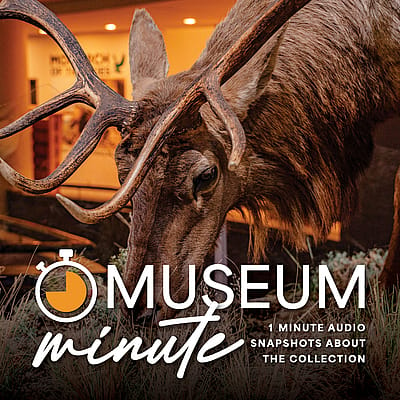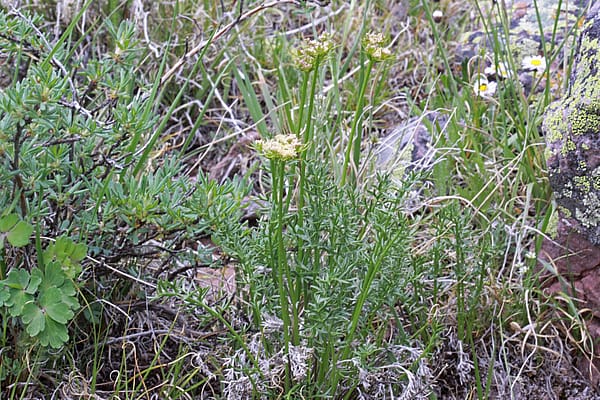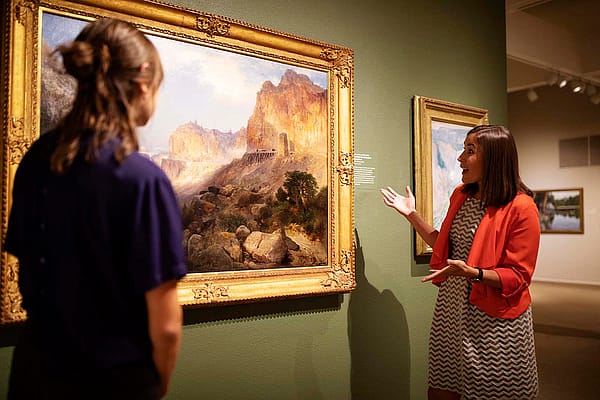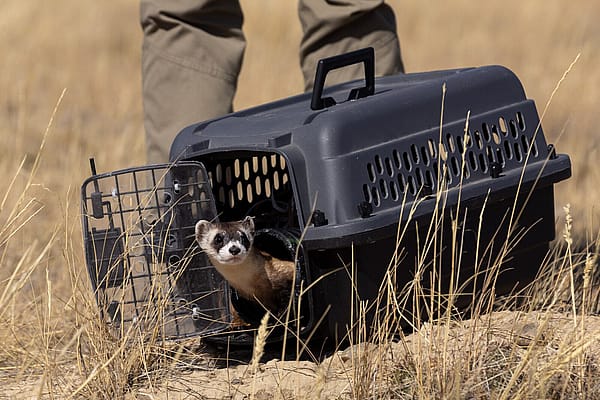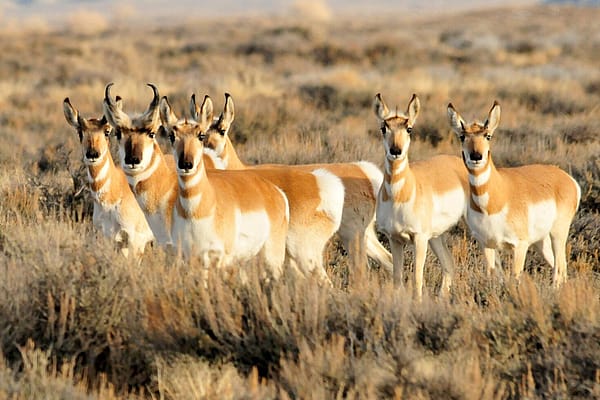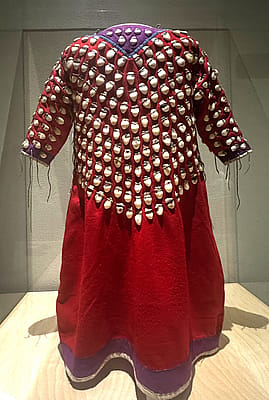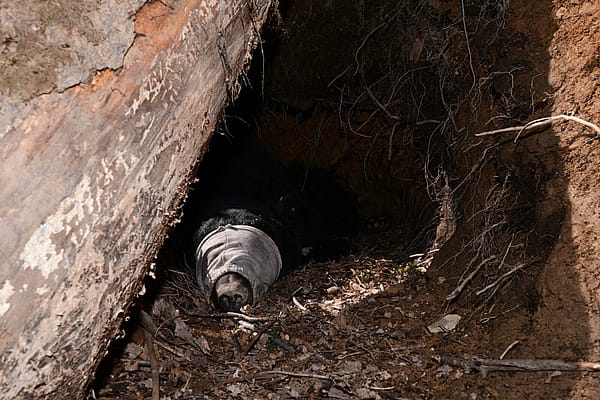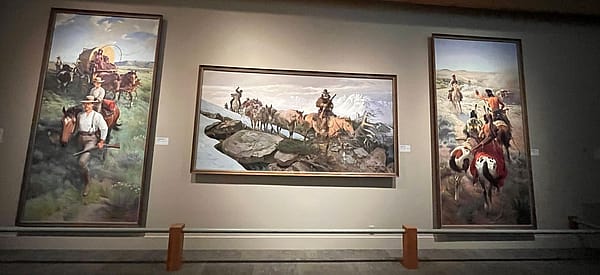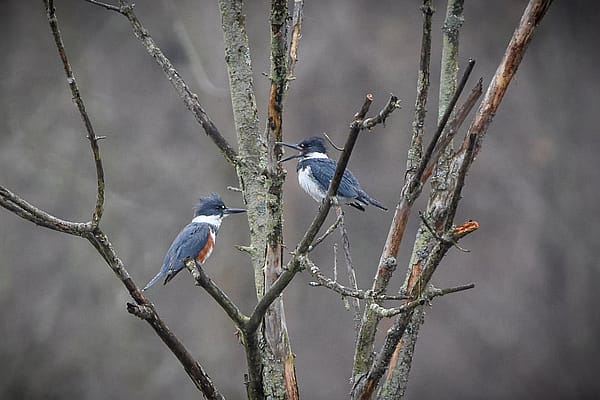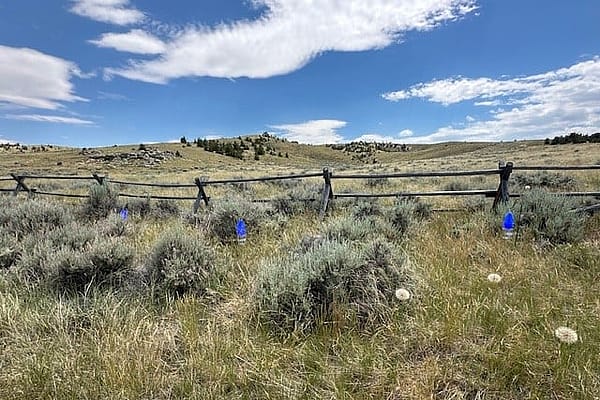Stewardship in Action
Simple Ways to Protect Yellowstone’s Wildlife and Ecosystems
by the Draper Natural History Museum staff
The Draper Natural History Museum was established to showcase the biodiversity of the Greater Yellowstone Ecosystem. The Draper believes we have a responsibility to steward the ecosystems in which we live. A steward is someone who takes responsibility for caring for and protecting the environment. So whether you are trying to do better for a New Year resolution or because you want to pass along wildlife encounters like you had growing up, being a steward of the places we live can take many different forms. Here are a few of our staff’s favorite acts of stewardship.
Keep a bird feeder
Bird feeders are an important resource for many birds who have lost their native habitat to human development (think roads, housing, etc.). During migration and winter, both energetically expensive times, bird feeders provide ready food. Additionally, birding has health benefits for you and helps you become more familiar with wildlife in your area! However, bird feeders can pose risks to birds by spreading disease and attracting predators. The good news is there are ways to mitigate these problems!
Keep your backyard birds healthy by regularly cleaning your bird feeders! Moldy seeds and bird droppings can spread diseases. Clean feeders every two weeks, or more often in wet weather or during heavy use. Use hot water and soap or hot water and a dilute bleach solution (1 part bleach to 9 parts water) to disinfect thoroughly. Remember to clean the area under your feeders to prevent mold growth and discourage rodents. Let’s keep our feathered friends thriving! For more information visit https://www.allaboutbirds.org/…/how-to-clean-your-bird…/
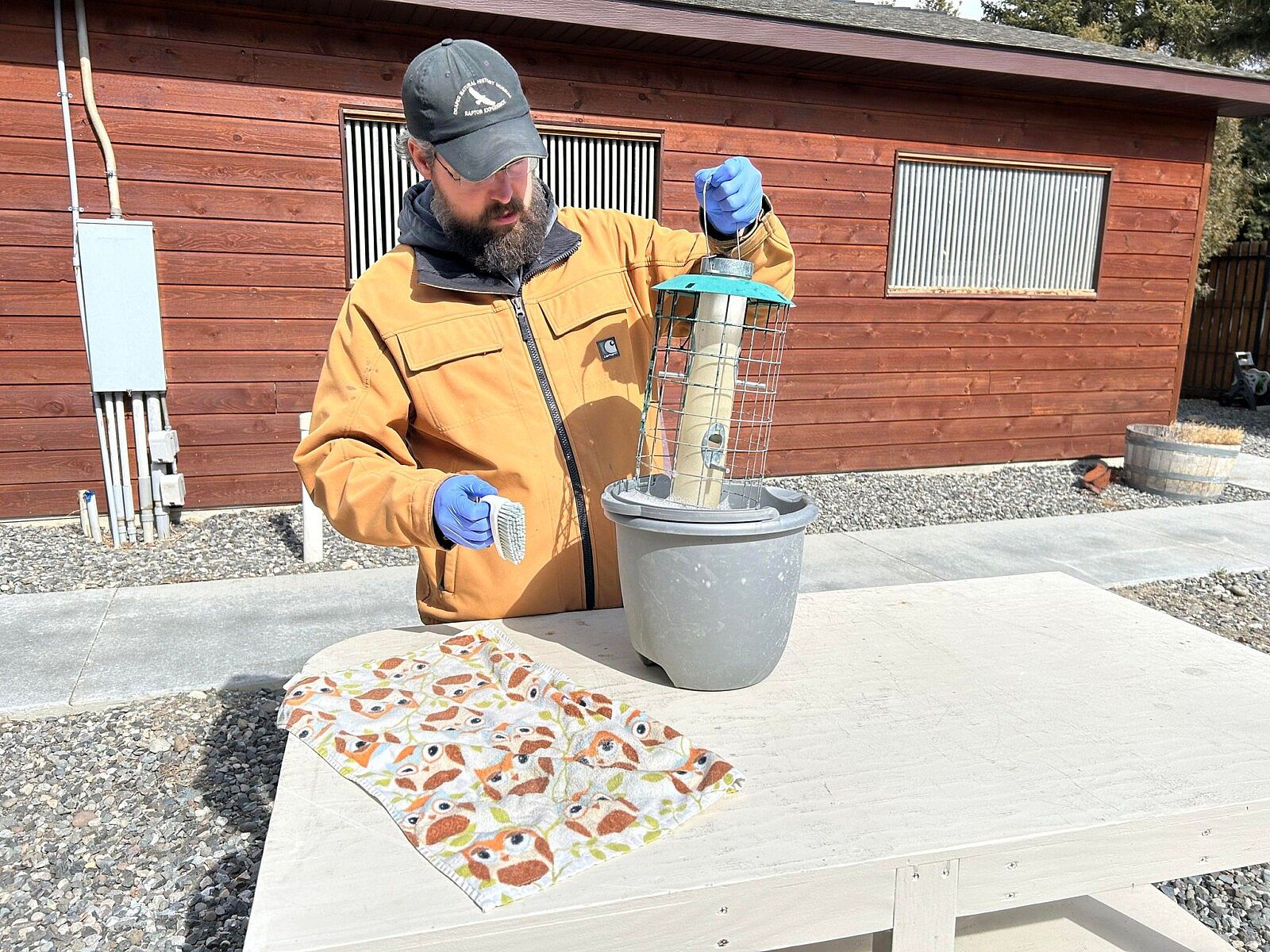
Don’t let your bird feeder become an attractant! Bird feed is good for wild songbirds but not for mule deer, bears, or other wildlife. You can hang feeders high, erect a fence around the feeder, make sure you’re feeding the birds quality ingredients, and bring feeders in at night to keep mule deer and other wildlife out of the feeders. More recommendations can be found here.
Hint: If you don’t want to keep a bird feeder, try planting native plants in your garden that provide food for birds! Then you get a beautiful garden filled with birds and don’t have to clean a bird feeder. You can also put up nests or nesting material. Learn more here.
Use proper etiquette when enjoying the outdoors
Most of etiquette boils down to being respectful and aware of how you’re engaging with your surroundings.
- Birding Etiquette
- Keep your distance from birds, especially when they have a nest in the area as it can cause undue stress.
- Don’t make or use bird calls to try to attract birds.
- Stay on designated trails, pick up trash, and observe trail etiquette (see below).
- Do your best to be informed on which species are threatened or endangered as they may be especially vulnerable to disturbance.
- Encourage fellow birders!
- More thorough lists of birding ethics can be found here.
- Trail Etiquette
- Leave no trace- After you’re done hiking or recreating outdoors it should be like you were never there! This means picking up trash, even if it isn’t yours. It also means using designated trails, campsites, and fire rings. You can find more detailed guidelines for leaving no trace here.
- Observe trail closures — We’re in grizzly country which means sometimes areas are closed because of high bear activity so there is a safety component to this one.
- Be Bear Aware — make noise, travel in groups, and always carry bear spray when you’re recreating in the area.
- People traveling uphill have the right of way. If they choose to stop and wave the downhill hiker on, that’s their call. As the downhill hiker, you should stop and make as much room on the trail for the uphill hiker as possible.
- Viewing Wildlife
- Keep your distance – REQUIRED distances for Yellowstone National Park:
- Stay 100 yards (91 m) away from bears and wolves
- Stay at least 25 yards (23 m) away from all other animals, including bison and elk
- Be quiet and move slowly.
- Obey the speed limit
- Clean up after yourself- don’t leave trash or food behind
- Teach your children respect for nature – Go into nature with your kids. Explore together. Tell them when their actions are disrespectful (screaming, throwing things, etc.) and be an example of how to observe nature and wildlife respectfully.
- Keep your distance – REQUIRED distances for Yellowstone National Park:
- Viewing Wild Animals in Human Care
- Be respectful – You are visiting their home. Speak with a soft voice and don’t try to get the animal to acknowledge you. Whistles and baby talk are not their language.
- Give them space – Do not cross barriers with your hands, feet, or photo equipment. If they choose to move away from guests, it’s for a reason.
- Teach your children to be respectful – do not allow them to scream at or throw things toward the animal. Keep children from climbing on the exhibit or shaking chains meant to keep guests at a distance. Be a good example of how to observe ambassador animals respectfully.
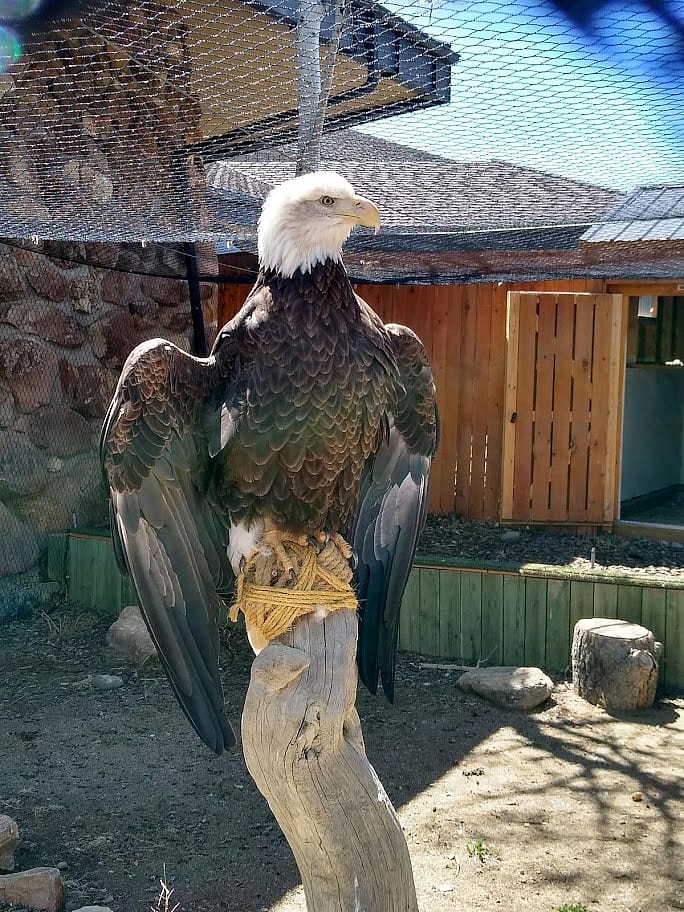
Reduce single-use plastics
You’re tired, thirsty and you just need water. So you stop by the local gas station and grab a plastic water bottle. We’ve all been there, but single-use plastics like that plastic water bottle are harmful for the environment in more ways than one. By avoiding single-use plastics, you can protect local wildlife. Single-use plastics take hundreds of years to decompose. Most single-use plastics cannot be recycled. While they sit in landfills and waterways, plastics endanger wildlife. Many wildlife end up ingesting plastics without meaning to. Plastic takes up valuable space in their stomachs making them feel full without providing any benefit and causing them to starve. Most attention has been focused on marine life, but this can happen to animals in land-locked places like Wyoming as well.
There are plenty of alternatives to single-use plastics out there including reusable water bottles, straws, and more. You can shop locally to avoid getting packages wrapped in single-use plastic. While you try to minimize your footprint, don’t shame people who do use single-use plastics. Single-use plastics can be important for people with disabilities, chronic illnesses, or other health problems.
Hunt with lead-free ammo
Members of the Wyoming Golden Eagle Working Group published a comprehensive study examining lead levels in bald and golden eagles across North America. Compiling data from over 1,200 eagles spanning 38 states from 2010-2018, researchers documented toxic levels in nearly 50% of birds tested for lead. This is the most comprehensive study on lead poisoning in eagles. Lead is a heavy metal that accumulates when ingested and is transported to other tissues (muscles, organs, bones) via blood.
The primary contributor of lead poisoning in raptors is the use of lead ammunition. When the bullet impacts a hard surface (e.g., bone) it can fragment into many small pieces dispersing up to 18″ inches from the point of impact. Humans also are susceptible to lead poisoning. Lead poisoning in raptors is the side-effect of ingesting contaminated meat, typically from gut piles or remnants of field dressing. It can impair neurological function, induce depression (thereby reducing reproduction in birds), cause organ failure, and if not treated is fatal.
Hunting is a vital part of Wyoming’s natural heritage and culture. As we exercise our privilege to put food on our tables during hunting season, consider sourcing non-lead ammunition for your next hunt. Groups like Sporting Lead-Free help provide links where you can find lead-free ammunition: https://sportingleadfree.org/
Support Local Conservation
Supporting local conservation organizations and efforts financially or through your time can be an important way to meet like-minded people while making a difference. Here are a few conservation-related activities and organizations local to Cody, Wyoming, in no particular order. This is not an exhaustive list so be sure to do your own research!
- Absaroka Fence Initiative (AFI)
- If you’ve gone through the Draper you may have noticed the fence added to our mule deer exhibit in 2024. The fence is wildlife-friendly meaning that it fences in cattle or other livestock while allowing wildlife to move freely across the landscape. The GYE is home to some amazing migrating wildlife. The ability to migrate can be the difference between survival or mortality. AFI holds public workdays to make fences wildlife-friendly, conducts fence inventories to see which fences impede migration, and provides educational resources.
- Ironside Bird Rescue
- Ironside Bird Rescue is devoted to rehabilitating injured and orphaned wild birds. It is the only wildlife rehabilitation facility in this part of the state,
- Wildflower Watch
- Phenology is the study of seasonal changes. Volunteers with Wildflower Watch track the life phases of plants from year to year. Changes in life phases over time can have major impacts on migrating wildlife such as mule deer and songbirds as well as pollinators. The Draper has run a program through Wildflower Watch for two years now on the Paul Stock Trail. Interested in volunteering? Email dnhmsampling [at] centerofthewest.org.
- The Christmas Bird Count
- The longest-running (avian-related) community science initiative in the United States, the Christmas Bird count takes place over Christmas each year. Organizers across the United States recruit volunteers to monitor routes or their feeders. Over time, the Christmas Bird Count provides data on species abundance. Wildlife managers use this data to help make decisions that affect different bird species. You can find the count nearest to you here.
- University of Wyoming Biodiversity Institute
- The University of Wyoming’s Biodiversity Institute is a hub of community science initiatives for the state. Their website offers ways to get involved in monitoring different wildlife species such as moose, salamanders, bees, and more! You can also become a certified naturalist through the Wyoming Naturalist program.
- Shoshone Backcountry Horsemen
- If you enjoy backpacking or hunting in wilderness areas, you owe a “thank you” to this organization for helping with trail maintenance. They work with the Shoshone National Forest to keep trails accessible to horses, which in turn means they are accessible to you as well!
- Trout Unlimited
- The East Yellowstone Chapter of Trout Unlimited works with agencies such as the Wyoming Game and Fish Department to care for streams and rivers. They sponsor habitat improvement, outreach events, and more.
Written By
Amy Phillips
Amy Phillips brings seven years of experience in the cultural heritage field to her position as Curatorial Assistant at the Center of the West's Draper Natural History Museum. She is the co-Principal Investigator on the “Bison of the Bighorn Basin” Project, which employs faunal analysis to learn about past bison ecology in the geographic Bighorn Basin using more than 100 bison crania sourced by community engagement. Amy also serves on the Society of American Archaeology Public Outreach Committee and as an appointed member of the Park County Historic Preservation Commission. She has research interests in the relationship between humans and their environments in the past and present, taphonomy, and bison ecology. Amy is currently pursuing her Master of Science in Cultural Resource Management, Archaeology from St. Cloud State University.
